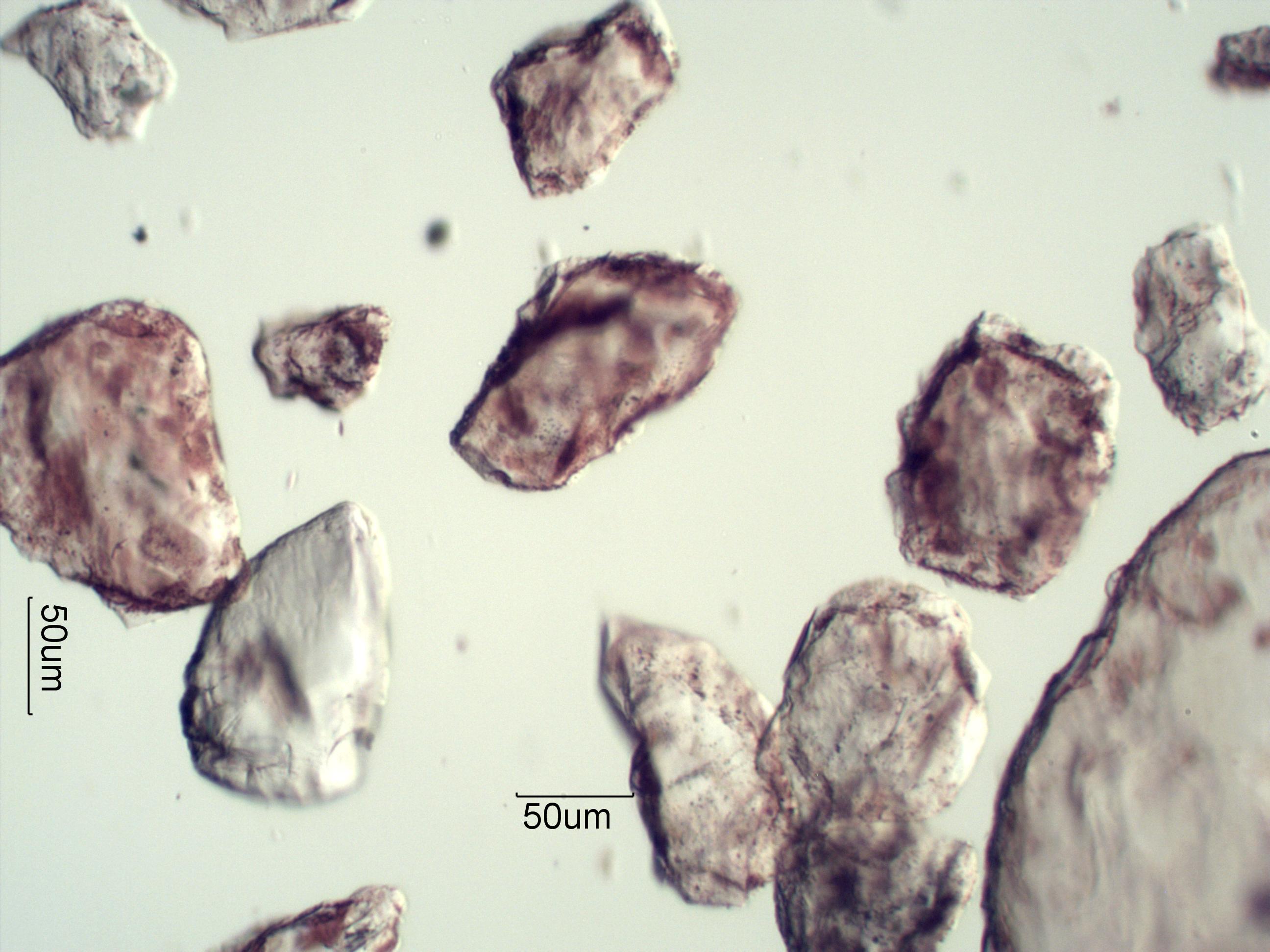Sand, Fay Canyon, Arizona
This sand was collected in Fay Canyon near Sedona, Arizona. Grooves and rough texture of the surface indicates a wind-blown source for the grains. The grains are hematite (red) coated colorless quartz. With transmitted brightfield illumination the hematite often appears dark.
Transmitted Oblique Brightfield Illumination
Welland, Michael, SAND: THE NEVER ENDING STORY, University of California Press, 2009.
http://www.microscopy-uk.org.uk/mag/indexmag.html?http://www.microscopy-uk.org.uk/mag/artjun01/clsand.html
(Good Information on the microscopy of sand, Great site for more information on microscopy in general)
http://www.scientificamerican.com/article.cfm?id=a-grain-of-sand-natures-secret-wonder
(Good Information on Sand with links to more information on sand)
http://www.sciencelive.org/component/option,com_mediadb/task,play/idstr,Open-feeds_fsc_exploring_sedimentary_processes_fsc02_02_m4v/vv,-2/Itemid,97
(Brief, very informative video on what can be learned from the shape of a sand grain.)
Definition/Function:
This sand was collected in Fay Canyon near Sedona, Arizona. It is derived from the Schnebly Hill Sandstone formation. The grains are quartz (SiO2) coated by hematite (Fe2O3). The red color comes from the presence of the hematite The grains are "frosted" rather than smooth, which indicates that the grain were wind-blown rather than water-worn.Significance in the Environment:
Characteristic Features:
Associated Particles:
References:
Greenberg, Gary, A GRAIN OF SAND: NATURE'S SECRET WONDER, Voyageur Press, 2008.Welland, Michael, SAND: THE NEVER ENDING STORY, University of California Press, 2009.
http://www.microscopy-uk.org.uk/mag/indexmag.html?http://www.microscopy-uk.org.uk/mag/artjun01/clsand.html
(Good Information on the microscopy of sand, Great site for more information on microscopy in general)
http://www.scientificamerican.com/article.cfm?id=a-grain-of-sand-natures-secret-wonder
(Good Information on Sand with links to more information on sand)
http://www.sciencelive.org/component/option,com_mediadb/task,play/idstr,Open-feeds_fsc_exploring_sedimentary_processes_fsc02_02_m4v/vv,-2/Itemid,97
(Brief, very informative video on what can be learned from the shape of a sand grain.)


